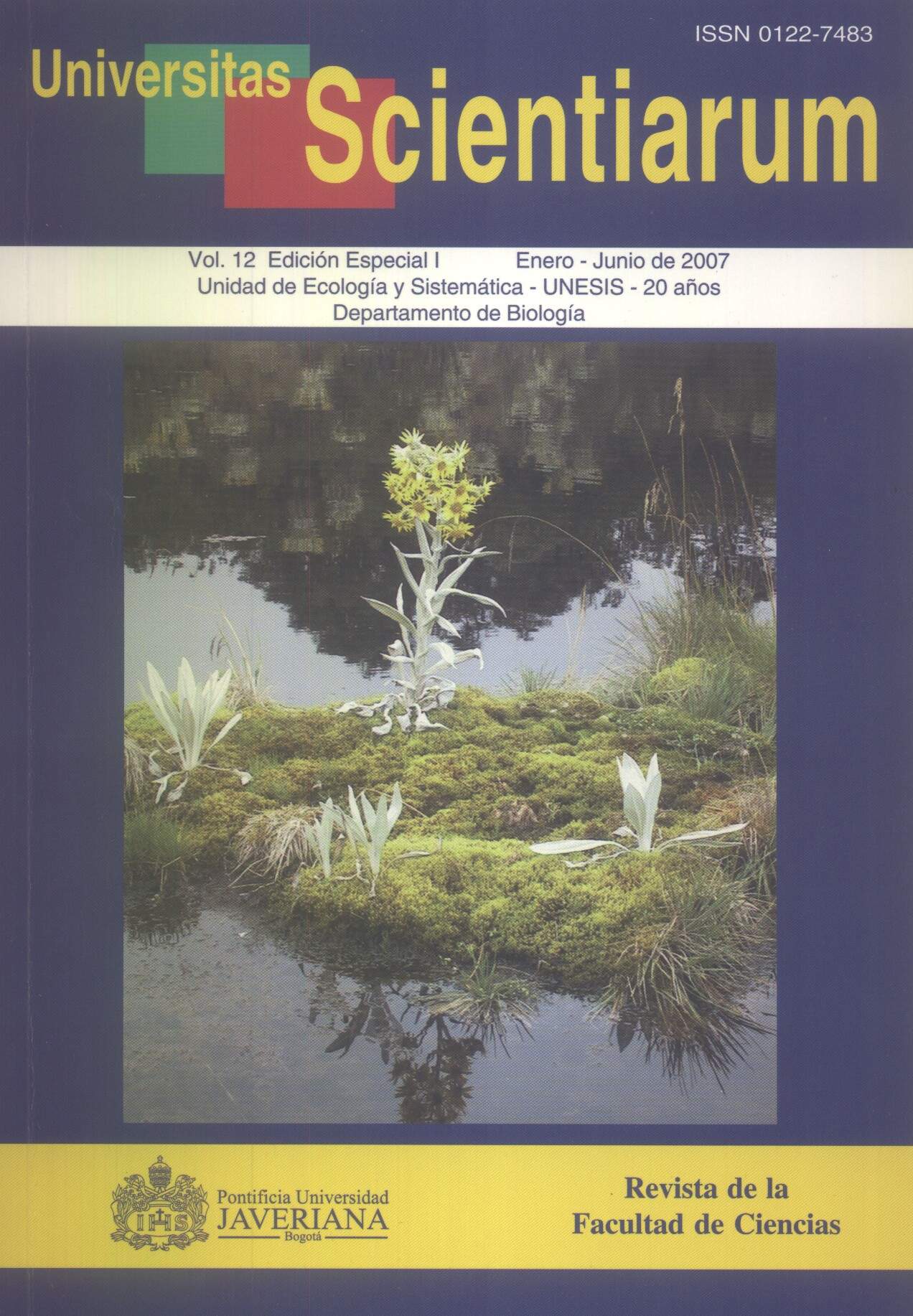Abstract
Se estimó la producción de hojarasca total, de fracciones y del menor nivel taxonómico posible de identificación de hojas en cuatro áreas de 1 ha, en el bosque de niebla de la Reserva Natural La Planada y, esta producción se relacionó con la precipitación, temperatura y humedad relativa ambiental. La producción de hojarasca se cuantificó mensualmente entre junio y noviembre de 2002, mediante la instalación de colectores distribuidos aleatoriamente en cada una de las áreas. El material colectado mensualmente se separó en hojas, ramas, partes reproductivas, epífitas y fragmentos no identificados, a cada una de las cuales se determinó su aporte en biomasa. La producción de hojarasca total estuvo dentro del rango de otros bosques montanos (7831 g/ha). Las hojas aportaron 74,4%, las ramas 10,8%, partes reproductivas 10,6%, epífitas 3,6% y fragmentos no identificados 0,6%. Las hojas se identificaron hasta el nivel de familia o género. El género que más aportó fue Clusia (40,5%). Se encontró que a mayor humedad relativa ambiental y temperatura, menor producción en los tres niveles de hojarasca. Una mayor precipitación se relacionó con una mayor producción de fracciones, familias y géneros de hojarasca. Se sugiere realizar trabajos a largo plazo corroborando la productividad estimada con las relaciones en precipitación y humedad.Univ. Sci. is registered under a Creative Commons Attribution 4.0 International Public License. Thus, this work may be reproduced, distributed, and publicly shared in digital format, as long as the names of the authors and Pontificia Universidad Javeriana are acknowledged. Others are allowed to quote, adapt, transform, auto-archive, republish, and create based on this material, for any purpose (even commercial ones), provided the authorship is duly acknowledged, a link to the original work is provided, and it is specified if changes have been made. Pontificia Universidad Javeriana does not hold the rights of published works and the authors are solely responsible for the contents of their works; they keep the moral, intellectual, privacy, and publicity rights. Approving the intervention of the work (review, copy-editing, translation, layout) and the following outreach, are granted through an use license and not through an assignment of rights. This means the journal and Pontificia Universidad Javeriana cannot be held responsible for any ethical malpractice by the authors. As a consequence of the protection granted by the use license, the journal is not required to publish recantations or modify information already published, unless the errata stems from the editorial management process. Publishing contents in this journal does not generate royalties for contributors.



